Hisao Nishikawa, Professor, Faculty of Letters
Understanding Mozart the Man Through Science
The most common image people have of Mozart would be a musical genius who could write down what ever music came to his head with facility and ease. Through research and investigation into Mozart’s original manuscripts, Professor Hisao Nishikawa is shedding new light on the man himself and the process of his musical creations.
*The job title and other details were up-to-date at the time of publication.
Hisao Nishikawa
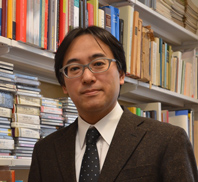
Hisao Nishikawa graduated in 1987 from the Faculty of Letters at Keio University, where he subsequently received a master’s degree from the Graduate School of Letters in 1990, and completed doctoral course requirements in 1995. In 2000 he was appointed Associate Professor of the Faculty of Letters at Keio University and became a Professor in 2011. From 1992 to 1994, he studied at the University of Salzburg on an Austrian government scholarship, and later moved to Vienna in 2004 as a senior visiting researcher at the University of Vienna until 2006. He is a member of The Musicological Society of Japan. He specializes in musicology and 18th century musical history with a particular emphasis on Mozart. He has conducted extensive research on Mozart’s manuscripts over the years in Austria, Germany, Hungary, and the Czech Republic to understand his compositional processes. His publications include Mozart, published by Ongaku No Tomo Sha Corp.
The Study of Manuscripts: Changing Our Understanding of Music and Composers
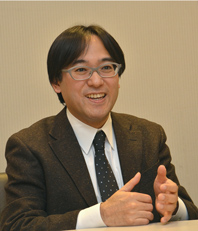
──I understand that you specialize in 18th century classical composers, and that studying manuscripts is an important part of that research.
The study of manuscripts is a relatively new field of research which began in the second half of the 20th century. Prior to that, it was standard practice to study published musical scores through stylistic analysis (structural and harmonic etc.). However, Mozart, for example, was trained how to compose music by his father at a young age, where Mozart would write the second half of a composition based on what his father would write for the first half. Therefore, if we were to try and understand the time of composition and who the composer was through the stylistic approach, it would be difficult to judge how much Mozart actually wrote, and how much his father contributed to the work. Therefore, it would be difficult to understand the compositional processes through the study of published scores alone.
That is why musical scholars, who realized the limits of this stylistic approach, started to advocate the importance of studying the original manuscripts.
──How, exactly, do you do the research?
We use paleographical and philological methodologies in the study of manuscripts. For example, through studying Mozart’s handwriting, we can estimate how old he was at the time of composition. We can also use this approach for Mozart and his father’s joint composition works to determine, in a scientific manner, how much was composed by Mozart. Furthermore, if new manuscripts are to be discovered in the future, we can use this rational approach in identifying its chronology and the composer instead of the stylistic approach, which is more subjective.
The actual paper on which musical notes were written is also an important resource. Because paper was valuable in those times, people would have bought only the necessary amount each time. By analyzing the paper (especially its watermark), we can estimate when Mozart was using it, thus allowing us to infer when the work was written. In some cases, it has turned out that some of his works were actually written in a completely different period from what was once thought.
For instance, through the stylistic approach, it was believed that Mozart composed the Horn Concerto No.1 during his early years in Vienna. However, it was later revealed that the paper on which the manuscript was written was the same as what he used a few months before his death, which meant that previous scholars had misinterpreted the year of composition by 9 years. There were many theories as to why the work was unfinished, but the most convincing reason now would point to his death.
Mozart had an assistant called Franz Xaver Süssmayr, who is known to have completed Requiem after Mozart’s death. Similarly, the manuscripts of the Horn Concerto suggest that Süssmayr added his composition to it, further supporting this theory. Thus, we can recognize the importance of scientific research in handwriting and paper analysis, and how it forms the foundation of the study of manuscripts.
Scientific Analysis of Musical Scores Including Autograph Scores and Manuscript Copies
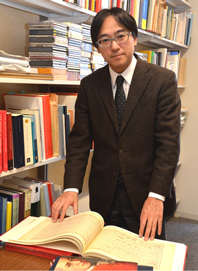
──One of the products of this scientific research would be the Neue Mozart-Ausgabe (New Mozart Edition) compiled by Die Internationale Stiftung Mozarteum (The International Mozarteum Foundation).
Yes, this is correct. Through the application of modern scholarly method, the project aimed to present an accurate reproduction of what Mozart would have intended as the most ideal rendition of his works, and it was more or less completed in 1991. The editorial labor was primarily based on the paleographical investigation into Mozart’s autograph scores, but after around 1990 – when I just started to research Mozart – the same research methods were applied in the study of other original resources (including manuscript parts and first editions). Manuscript parts are what performers were actually using in those times. For example, full scores are initially made for operas and symphonies, and from there, a professional copyist would write the parts for each orchestral instrument. The orchestra members would then perform their own parts.
However, what is problematic is that the composer at this point may sometimes revise the work, that is, contents that are not written in the autograph score may appear in the manuscript parts. There are cases in which the composer himself is writing revisions in manuscript copies, and such investigations are part of my main research.
There have been discoveries of 200 year-old manuscripts that were actually used by Mozart during his performances, but it is not as if someone had purposely written, “this manuscript was used by Mozart”. Handwriting and paper analysis are effective methods in such analyses. There are only very few copyists that Mozart commissioned the work to, so by looking at the handwriting, or whether Mozart made any additions to the manuscript parts, and through paper analysis, we can roughly estimate when the parts were used for performances; and if those additions are not in Mozart’s autograph score , we can also determine what kind of revisions were made to the original text.
──That would mean that there are differences in the autograph scores and the manuscript copies.
Yes, that is exactly so. I discovered a new set of parts for Linz Symphony, for which the autograph score remains lost, and two authentic sets of parts had already been discovered. My discovery would be counted as the third authentic parts, but when the second was discovered, there were scholars who argued that the Linz Symphony had been revised because some of the musical notes were different from the first. In other words, the second was believed to be the original and the first, the revised version. However, it became clear that the third parts were the same as the second. The third parts were probably in the possession of Mozart until his death, so I believe that this symphony was never revised.
In addition to these revision issues, the study of manuscript copies is also extremely important as they may contain detailed instructions to the performers which are not included in the autograph scores.
Discovering the True Mozart Through Rational Research
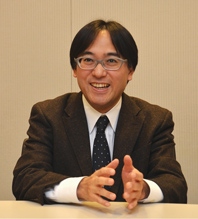
──One is reminded of Mozart’s ill fortune during his final years.
It was commonly understood that Mozart suffered from illness and poverty, exhausted and worn out while he wrote Requiem right until his death. However, looking at the unfinished autograph score of the Horn Concerto written during that time, there are numerous instructions to the horn player, which were all in the spirit of fun: “come on - quick - get on with it,” “Enough, enough!,” “little donkey!” and so on. This makes us wonder perhaps he was in good health and in good spirits before his death. This is one example that illustrates just how existing theories can be overturned at any time.
──I always saw Mozart as a genius with few parallels in history, but after listening to you, Mozart seems more familiar and accessible, just another human being like us.
We now know, at least, that our views on Mozart as a genius have been exaggerated. One scholar argues that we still need to study what lies at the base of Mozart’s compositions. In other words, there is no doubt he is a genius, but because of that, people have tended to focus on that aspect the most. He is also a human being just like any of us, so not all his works are perfect, nor are they masterpieces. Among his works are some unremarkable pieces as well. Moreover, we need to broaden our perspective and study the 10,000 or more symphonies that were written by his contemporaries, and by comparing these works, we become aware of Mozart’s true creativity for the first time, and to what extent he was a musical genius.
──So that is why we need to conduct the research using a rational approach.
We need to apply this method not only for Mozart’s childhood works, but also to his later masterpieces such as Requiem, the Magic Flute, Symphony No. 41 Jupiter, which were first thought of as genuinely Mozart’s creation, unique beyond comparison. Extensive research has revealed that many works exist on which Mozart may have modeled his pieces. 20 years prior to Requiem, Michael Haydn had also written a Requiem, in which there is a part that is almost identical in both compositions. It is well known that Mozart revered Haydn and was influenced by his works; moreover, Mozart is believed to be one of the performers in first performance of Haydn’s Requiem, so Haydn’s influence on Mozart is undeniable. Mozart also uses techniques ,for the finale of Jupiter, similar to that of Haydn’s work composed ten years earlier. The Magic Flute is not entirely unique either; a work of opera very similar in style, the Philosopher’s Stone, premiered the previous year at the same theatre by the same theatrical group.
──These are startling stories that can change our traditional understanding of Mozart and his works, but it seems that there is still so much room for further research.
Musicians usually experience a peak in their creativity at different points in their careers; it could come at the middle of their career, or it could come much later in their final years. Hypothetically speaking, say a musician’s average life span is 70, Mozart died at the age of 35 when his creativity was heading towards its pinnacle. That is why there is huge interest in speculating what kind of direction his music would have taken beyond that. Using the words “final years” to describe the period before Mozart’s death may be misleading. Requiem, Magic Flute, and his other later works should be seen as the departure point toward his creative pinnacle, rather than a culmination of his musical career.
It is said that he died despairingly from poverty and illness, but it has also come to light that he was receiving several times the income compared to an average citizen of Vienna. It is yet a big mystery as to why Mozart accumulated so much debt. He was about to embark on new projects such as church music and German operas. Our search into understanding Mozart, the man, will continue to be a huge topic of research into the future.
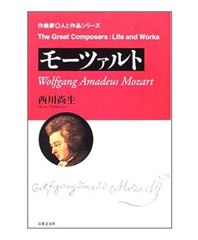
*This article appeared in "Kenkyu Saizensen" (Feb. 14, 2014) of Keio University Japanese Website.
*Position titles, etc., are those at the time of the interview.
